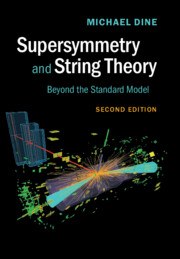Book contents
- Frontmatter
- Dedication
- Contents
- Preface to the First Edition
- Preface to the Second Edition
- A note on the choice of metric
- Text website
- Part 1 Effective field theory: the StandardModel, supersymmetry, unification
- 1 Before the Standard Model
- 2 The Standard Model
- 3 Phenomenology of the Standard Model
- 4 The Standard Model as an effective field theory
- 5 Anomalies, instantons and the strong CP problem
- 6 Grand unification
- 7 Magnetic monopoles and solitons
- 8 Technicolor: a first attempt to explain hierarchies
- Part 2 Supersymmetry
- Part 3 String theory
- Part 4 Appendices
- References
- Index
5 - Anomalies, instantons and the strong CP problem
from Part 1 - Effective field theory: the StandardModel, supersymmetry, unification
- Frontmatter
- Dedication
- Contents
- Preface to the First Edition
- Preface to the Second Edition
- A note on the choice of metric
- Text website
- Part 1 Effective field theory: the StandardModel, supersymmetry, unification
- 1 Before the Standard Model
- 2 The Standard Model
- 3 Phenomenology of the Standard Model
- 4 The Standard Model as an effective field theory
- 5 Anomalies, instantons and the strong CP problem
- 6 Grand unification
- 7 Magnetic monopoles and solitons
- 8 Technicolor: a first attempt to explain hierarchies
- Part 2 Supersymmetry
- Part 3 String theory
- Part 4 Appendices
- References
- Index
Summary
While perturbation theory is a powerful and useful tool in understanding field theories, for our exploration of physics beyond the Standard Model an understanding of nonperturbative physics will be crucial. There are many reasons for this.
One of the great mysteries of the Standard Model is non-perturbative in nature: the smallness of the θ parameter.
Strongly interacting field theories will figure in many proposals to understand other mysteries of the Standard Model.
The interesting dynamical properties of supersymmetric theories, both those directly related to possible models of nature and those which provide insights into broad physics issues, are non-perturbative in nature.
If string theory describes nature, non-perturbative effects are necessarily of critical importance.
We have introduced lattice gauge theory, which is perhaps our only tool for doing systematic calculations in strongly coupled theories. But, as a tool, its value is quite limited. Only a small number of calculations are tractable in practice, and the difficult numerical challenges sometimes obscure the underlying physics. Fortunately, there is a surprising amount that one can learn from symmetry considerations, from semiclassical arguments and from our experimental knowledge of one strongly coupled theory, QCD. In each of these, an important role is played by the phenomena known as anomalies and, related to these, a set of semiclassical field configurations known as instantons.
Usually, the term “anomaly” is used to refer to the quantum mechanical violation of a symmetry which is valid classically. Instantons are finite-action solutions of the Euclidean equations of motion, typically associated with tunneling phenomena. Anomalies are crucial to understanding the decay of the π0 in QCD. Anomalies and instantons account for the absence of a ninth light pseudoscalar meson in the hadron spectrum. Within the weak-interaction theory, anomalies and instantons lead to violations of baryon and lepton number; these effects are unimaginably tiny at the current time but were important in the early universe. The absence of anomalies in gauge currents is important to the consistency of theoretical structures, including both field theories and string theories. The cancelation of anomalies within the Standard Model itself is quite non-trivial. Similar constraints on possible extensions of the Standard Model will be very important.
- Type
- Chapter
- Information
- Supersymmetry and String TheoryBeyond the Standard Model, pp. 76 - 105Publisher: Cambridge University PressPrint publication year: 2016



